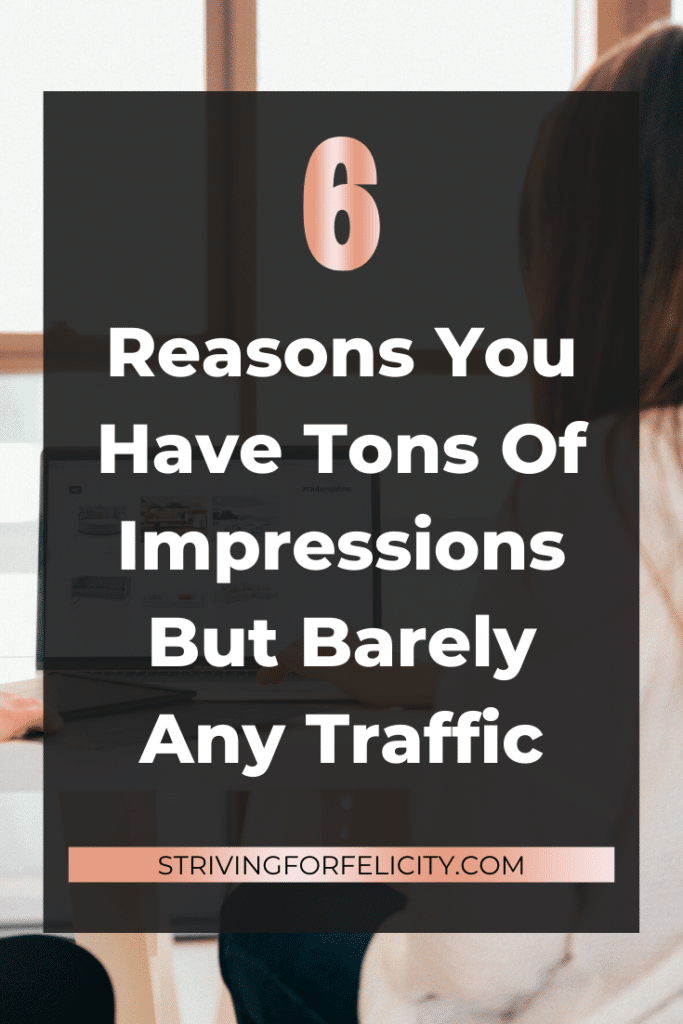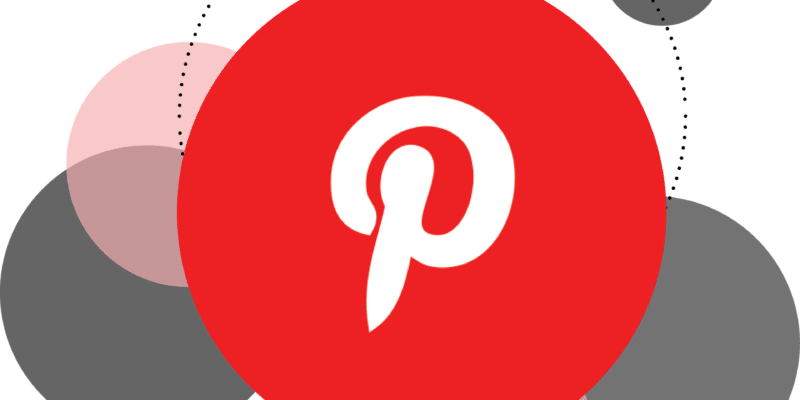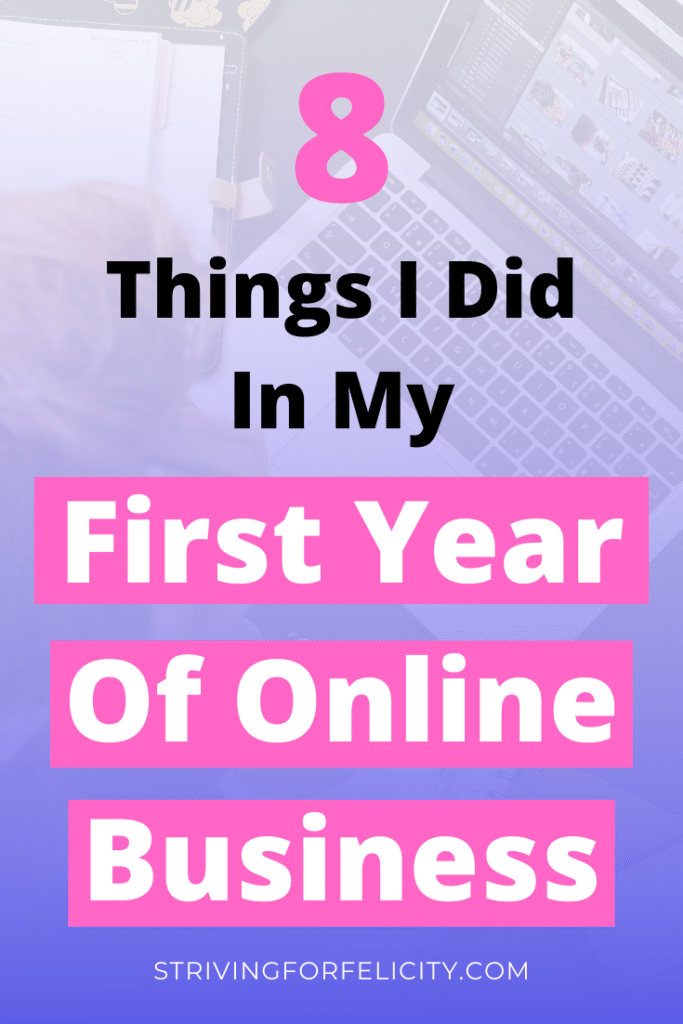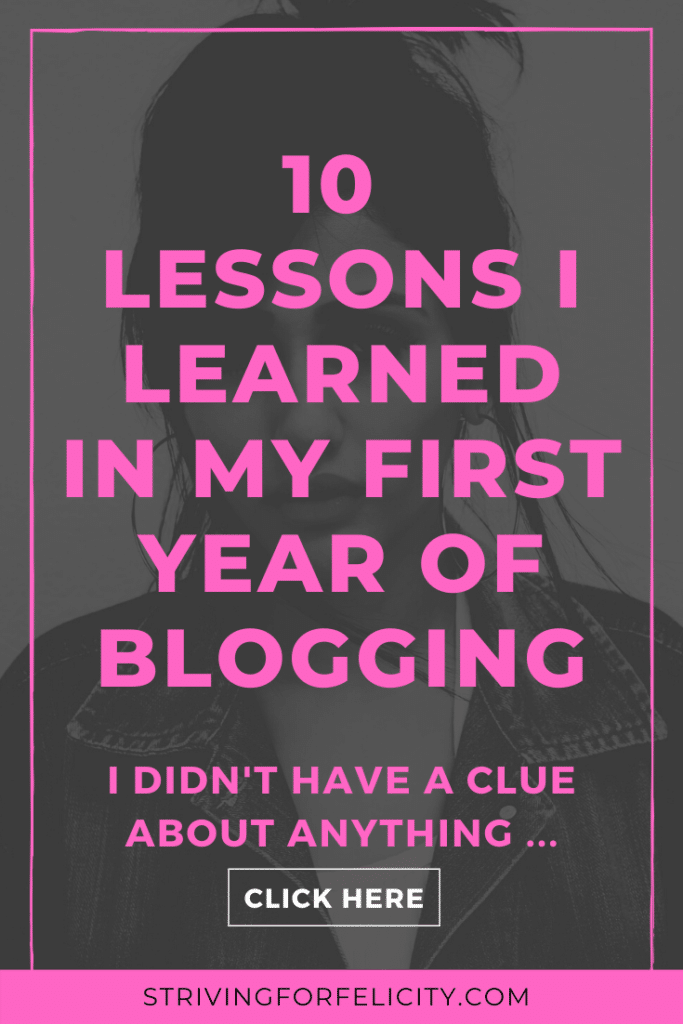Now that I have been actively engaged in Pinterest Marketing for almost a year, I took the time to take a step back and reflect.
Learning new things is natural whenever you start doing something new. And generally, I love to learn new things. It gets me really excited and feeling rather proud to have grown just a little bit more.
However, some things that I did learn concerning Pinterest Marketing would have taken away a bit of the stress, frustration, worry, and unnecessary effort at the beginning of my marketing journey had I only known them sooner.
Anyway, no sense fretting over the past. Ultimately I am just happy to know these things now so that I can teach them to you and spare you some of these negative emotions.
With that, let’s get into it!
1. Don’t go hunting for the viral pin design
Oh yes, this had given me quite some headache for weeks, if not months.
If you are looking deeper into Pinterest marketing, you are going to stumble over the expression “viral pin” very often.
To say it in simple words: It’s a pin that just takes off and does immensely good, meaning it gets tons of saves and a lot of traffic to your website.
And while talking about viral pins, I noticed many people focusing on the specific Pin design. And there are even statistics about it.
All together they say things like:
- “Red color tones get more saves than blue color tones.”
- “Crammed backgrounds get more clicks than monochrome backgrounds.”
- “Use bold fonts.”
- “Put your text into the upper half of the image.”
- …
And yeah, sure there is definitely some truth to that, especially the statistically proven ones.
But from my personal experience, your pin really doesn’t need to be very spectacular to do well on Pinterest.
I’ve created stunningly aesthetic pins (if I am allowed to say so myself) that didn’t get a single save.
On the other hand, I noticed that utterly unspectacular pins from other people with literally just the title and a one-color background are among the top three performing pins I’ve saved onto my boards.
Also, if you type in a few keywords into the Pinterest search bar and then look at the top-performing pins. I can pretty much guarantee you, you will find some that are very plain if not even ugly. And that many will look very similar and don’t stand out from each other.
What does that tell us?

Simple: Pin design is by far not as important as some people make it out to be.
And that’s crucial to know! Now, instead of obsessing on designing the right templates and finding the perfect stock images to go with the title, you can place your time and effort into more important tasks.
For example, writing a keyword-rich description, title, file name, board titles, board descriptions, section title, profile title, and profile description.
2. Create easy templates
That being said, another thing I have learned is to create good looking but easy templates for my pins.
The key here is speed.
Let’s be real. You are trying to build a business, most likely in the form of a side hustle. Meaning you already don’t have 8 hours a day to achieve this goal. Much less do you have the time to waste on designing your pins when you should focus much more on creating content, products, SEO, and marketing your business.
And you have to create multiple pinnable images for one Blog post/product (I currently create 9 pins per post).
Templates are the first way to reduce the time to spend on creating these images.
You put in a few hours to design a couple of eyecatching pins with Canva, and from then on, you just copy them and change the title and the image for each new content.
When designing these templates, you need to be careful to not make them too complicated.
For example, I allowed myself one complicated element, which is a number in the form of a frame in which I insert a picture of the rosé gold color I want the number to have.
This causes me to have to change and resize the frame every time the number changes, which happens pretty much with every blog post.
Talking about unnecessary effort, right?
That’s a task that would fall into the “20 percent results for 80 percent effort” scheme of the 80/20 rule.
What we want is to invest 20 percent effort/time for 80 percent of the results.
But not only unique design elements like that take up time.
What I have found to take up most of my time is the search for suitable stock images and phrasing the title differently.
So, how do we solve the image issue?
- Design the pin so that the image won’t be noticeable either because it is in the background or because it occupies only a small part of the pin. That way, it doesn’t matter so much what the image shows.
- Simply choose pictures of a coherent theme. Like always choosing images of women or of laptops or of nature. That way, you won’t obsess over finding the image that fits the topic of the pin perfectly.
- Use the same image for all of your pins on that content/product, but play with the size, direction, and color pattern. That way, it will almost seem like you used many different images.
3. Give your images a file name.
It’s such a simple thing, and I had heard it multiple times but was always too lazy to name my images once I’ve saved them from Canva.
But having a keyword-rich image name is going to help them rank even better when you upload them to Pinterest.
Their algorithm literally searches for keywords everywhere. Even inside the Blog post, your pin is linking to.
If it’s perceived as high value, meaning it has lots of keywords and other SEO factors, then it is going to give your Pins another boost.
So just use keywords wherever you can. Don’t stuff them into your description. That’s probably gonna get them marked as spam or be penalized by the algorithm.
Instead, use the different places where you can put keywords in. The filename of your image is just one of those.
4. Don’t have too many group boards
Ok, I know what you are thinking: The more group boards I can pin my image onto, the more people are going to see it, which means I will get more traffic.
Generally speaking, yes, that’s true.
BUT…
…with great power comes great responsibility!!! (Sorry, I just had to be a dork for a moment ^^’)
But seriously, group boards not only present a possibility of traffic they also give you responsibilities.
Most group boards have a 1:1 pin ratio. Meaning for one of your own pins, you have to pin one of theirs.
Which is just fair, in my opinion, so I make sure to follow that rule. Of course, you might say “f#uck this, I just pin my own content,” but that will only work for so long.
Group boards of high quality are usually managed well, meaning they will throw you out after 30 days or so, if you don’t deliver on your end of the bargain.
Those group boards that don’t throw you out are most likely pretty trashy. And there are a lot of people pinning not niche related content so you might as well ditch that group board for it will not bring many results for you anyway.
So you want to keep a 1:1 ratio with pinning and saving images to and from group boards.
Now, if you pin one of your pins to say, 10 group boards, you have to save 10 pins of others.
That’s a lot of effort, and it takes away too much of your valuable time.
That’s why I instead focus on a few quality group boards. Especially since …
5. Tailwind Tribes are much better than group boards
(Of course, you need to be a Tailwind user to be able to contribute to Tribes.)
In Tailwind Tribes, you can
- find more high-quality pins to save, and …
- receive more repins …
- by more high-quality pinners
Overall you just reap much better rewards from most tribes then from most group boards.
6. Have multiple group boards on the same topic
Staying with the issue of group boards, I’ve recently made the frustrating experience that a group board can suddenly disappear.
They didn’t throw me out or something, the whole group board just vanished from Pinterest. And what was especially painful about that was the fact that this was not only a great group board but also my only group board in the entrepreneurial niche.
So suddenly, I couldn’t pin my entrepreneurial images to any group board anymore.
And if you’ve ever applied to group boards, you probably know that it can take a while and a lot of applications to get accepted into one.
So the lesson I learned was that you should have at least two group boards on every niche your pins cover, should one of them throw you out or vanish into thin air.
7. If you can’t pin much of your own stuff, pin less in general
In the beginning, I bought into this whole “you should pin 20-30 images daily”.
And that indeed seems to be a generally recommended amount of daily pins to have the most success.
However, if you don’t have much content of your own yet, you won’t be able to fill those 20-30 slots up with many of your own pins. Meaning you will mainly pin other people’s stuff.
Granted, that will gain your impressions and followers, but if they don’t convert to traffic to your website, what’s the use?
I much rather save myself the time, effort, and frustration of pinning tons of non-traffic driving pins.
So if you can only pin 2 of your own images daily, then maybe you should only pin 8 images daily in total. That way, at least 1/4 is your own, and the traffic will be the same you’d have gotten if you’d pin a total of 25 pins.
Try it out for yourself if you want.
8. Use the Tailwind Smart Loop Function
One way to be able to pin more of your own pins daily is Tailwind‘s smart loop function.
It will keep pinning the same image every 3 months or so to the same board. That way, your old content gets recognition without you having to manually do it, and it helps you to pin more of your own pins daily without having to create more.
9. Use Tailwinds Interval Setting
Something I only recently started doing is taking advantage of Tailwind’s Interval Setting.
It goes like this:
You have an image you want to pin to 6 different boards. Now, instead of having Tailwind pin them straight after one another or randomly due to the shuffle feature, you can deliberately say: I want this image to be pinned every 4 days.
This will make your account seem much more professional. After all, it always seems somewhat spammy if the same picture appears multiple times in one row, doesn’t it?
Also, it gives the image more possibilities to stand out. Imagine you scroll through someone’s Pinterest account and see that there is the same image 4 times in a row.
You might look at the first one but skip the three others.
However, if you stumble over the Pin with days in-between, you will read it multiple times.
I once heard it takes humans 7 repetitions of seeing a commercial, for example, for it to register in our minds.
If that’s true, interval pinning gives you more of a chance to have someone click on the link of your pin.
Also, you might reach more people with the same content. If you pin the same image every day for a week and someone’s just not on Pinterest in that week, they might miss it in your feet.
Of course, these are hypothetical scenarios, I am aware of that. But they might be worth considering.
10. Don’t panic if you get banned.
Again, I am speaking from personal experience. One day, my Pinterest account was just shut down.
As you might imagine, I somewhat panicked and went through all possible scenarios of what I could have done wrong to be considered as spammy and ban-worthy.
Fortunately, after writing an E-Mail to Pinterest’s support team, they apologized for the mistake (which their system apparently sometimes makes) and opened my account again with all pins and boards just in place as before.
And if you look at my statistics, I also assume they gave me a We-are-sorry-for-the-ban-boost since my impressions soared after that for a few days before dropping back down to their average level.

So if you should ever get banned, don’t panic! It might very well be a mistake and can easily and quickly be reversed.
(Still, it, of course, teaches us that we shouldn’t put our eggs all in one basket for the long run. Just think of all the careers ruined by the sudden shutdown of Vine. Yet if you are just starting out and don’t have much time on hand, one source of traffic is alright while you improve your SEO rankings.)
11. Don’t use your own URL on other people’s pins
I admit I am guilty of this one crucial mistake. That’s also the reason I thought I might have been banned.
Rather often, pins don’t have a URL of their own. Whenever that happens, Tailwind doesn’t let you schedule them.
Now, after multiple times of that, I got extremely annoyed and put my URL in the empty field of 1-3 quotes. I only did it with quotes that were similar to my own anyway, so it wasn’t like I wanted to lead people to an utterly irrelevant website.
But still, it felt fishy and wrong to do, so instead of my own URL, I just put Pinterest.com in there. After all, it were really great images, and I wanted to pin them.
This worked for some pins, but over time most of them came up with errors when Tailwind tried to pin them at the scheduled time.
So, unfortunately, now I simply don’t pin the image if I discover it lacks a URL. In the end, it’s mainly the other person’s loss and not mine.
12. Don’t overvalue hashtags
Hashtags are essential on Instagram and Twitter. On Pinterest, though, not so much.
Sure, they help your ranking somewhat, but I’d instead put those keywords inside a compelling text that convinces the reader to click through.
Pins with hashtags are ranked chronologically for that keyword, which gives you a chance to stand out for a few days after having pinned the image.
But then again, who searches for Hashtags on Pinterest?
Try it for yourself.
Search for “fempreneur” and #fempreneur in Pinterest and compare the results. The latter ones are probably not going to be very appealing to you.
13. You should have at least 3-4 of your own boards to pin a pin to
It’s easy to get caught up thinking you are pinning your images to a lot of boards. And sure, that might be true. But what kind of boards are you pinning them to?
Because ideally, you should pin them to your own boards first, before you pin them anywhere else.
Inside of group boards, your pins quickly drown between tons of other pins that are being pinned daily.
Inside of your own boards, however, they get to shine for themselves!
Also, if your ideal customer/fan stumbles over your Pinterest account and checks out your boards, you want him to see your pin multiple times.
Also, if you can pin the same image to multiple of your boards, it fills up your pinning schedule, and you can pin more in total with creating fewer images.
Therefore try to have at least 3-4 boards where you can pin an image to.
For example, if I create an “11 Steps To Become A Confident Boss Lady” image, I could pin it to the following boards of mine:
- Boss Lady Tips
- Personal Development
- Mindset Growth
- Tips For Success
- Women In Business
- Striving for Felicity
I admit this is a point where I am still in need of improvement. Sometimes I do have images that don’t seem to fit into more than 2 boards, and that’s frustrating.
To solve that, look at your already existing boards and the images you are pinning in there. What topics repeat themselves? Could you single them out and create a more specific board for them?
Another tactic is to look at your competitors’ boards. If you are a vegan Pinterest Marketer, chances are the board topics of your fellow vegan Pinterest Marketers might also be fitting for you.
Or they could inspire you to come up with totally new board themes.
14. Beware of Quotes
Alright. This is a hot topic for me.
I’ve mentioned it before in The 5 Biggest Pinterest Mistakes I Made In The Beginning.
At the beginning of my Pinterest Marketing journey, I thought: YEAY QUOTES!
I have always loved quotes. Pinterest users love quotes. My business niche is very compatible with motivational and inspirational quotes.
So? I, of course, created tons of quotes.
And they did well! Brought me lots of impressions
BUT … no link clicks and, therefore, no traffic.
After realizing this, I thought: F#CK QUOTES!
I don’t have the time to create quotes that won’t convert into traffic.
I would have to create tons of new daily quotes like those Instagram accounts to start gaining some traffic through them, and who’s got time for that as a side hustler?!
BUT…
Now, I think: Maybe there is potential in quotes after all.
See, I’ve recently been working on my Affiliate Marketing strategy on Pinterest. But I haven’t been able to get many clicks on the links yet.
Most affiliate sales over Pinterest always seem to be clothing or DIY stuff and not necessarily business tools and courses (as far as I have observed, but I am still learning).
Then I noticed that the affiliate marketing kit that K Money Mastery gives its affiliates has Instagram quotes with a caption that talks about the product.
So why not try this method in Pinterest as well? Quotes always do exceptionally well.
If I create a “Tired of 9 to 5” image, for example, and put the description and link to a Kindle Book Publishing course that can help you quit your 9 to 5 in there, it’s no trick, but actually a valuable and related addition to the quote.
Don’t you think?
Disclaimer: This one I haven’t tested out yet. I just thought it might give you some insight into how I am improving and experimenting with my Pinterest Marketing strategy.
Also, I don’t want to entirely discourage you from creating quotes images and pinning them.
This is just my experience with it.
15. Don’t wait to buy a course
And last but certainly not least, I have learned that I might as well simply buy a course from an expert before I have to figure it out on my own.
I get it; money is scarce if you are trying to build an online business from scratch. Even more so, if you are a student like me with no income and want to invest in tools like Tailwind.
But maybe this course is worth it and will save you not only time but also money in the long run.
I had been doing Pinterest Marketing for half a year by the point I bought Melyssa Griffins Pinfinite Growth Course.
By that time, I already considered myself an advanced, if not expert, Pinterest Marketer.
After all, I had over 2 million impressions.
Yet, barely 20 daily blog visitors. So I knew I had to be doing something wrong, and I needed the strategy of an expert to fix that.
Sure enough, Pinfinite Growth did teach me quite a few additional tactics that made a positive impact on my results.
But the majority of the information I had already known at that point.
So maybe, I would have benefitted from buying that course sooner. Perhaps it would have saved me some time and frustration.
Anyway, that’s no general rule, and everybody has to make that decision based on their current situation. Still, it might be a point worth considering.
Alright, I hope I provided you with some new insights that you can implement to improve your Pinterest marketing strategy.
If you are patient and unrelenting, Pinterest can be a great source of high-quality traffic for you. So please don’t give up!
I wish you all the success you can dream of with your Pinterest marketing strategy!
Sophie















